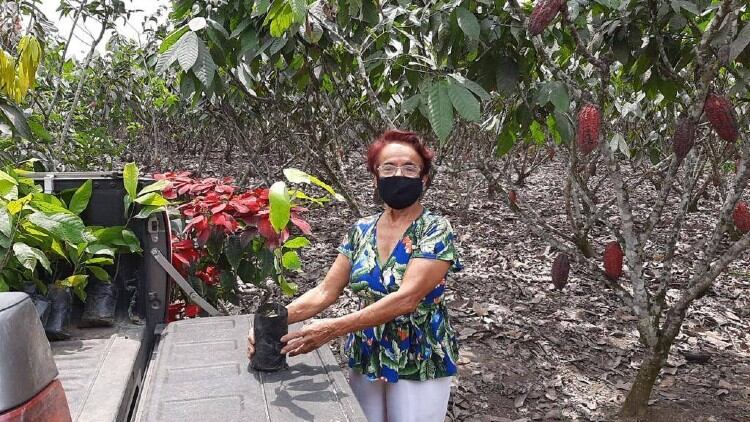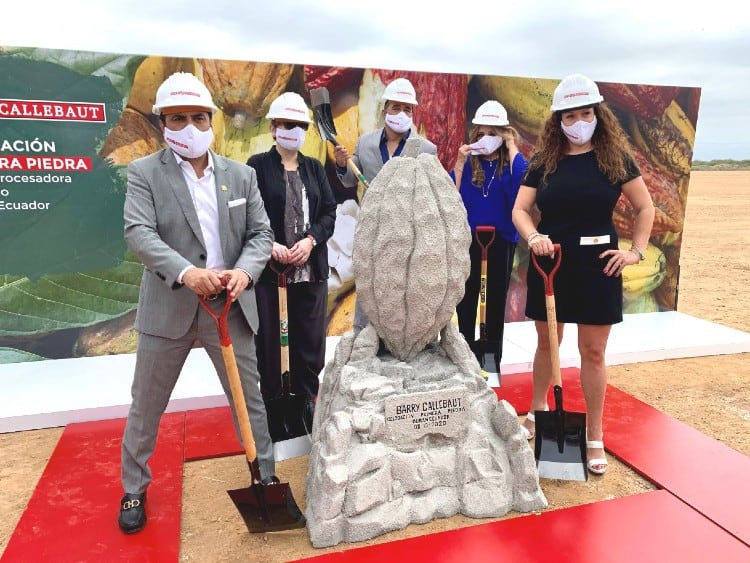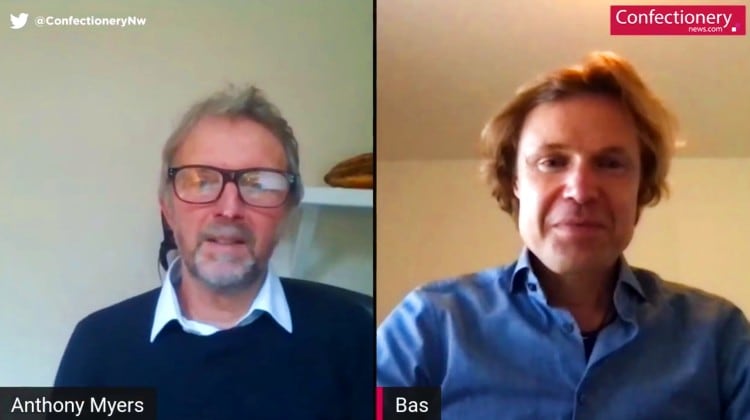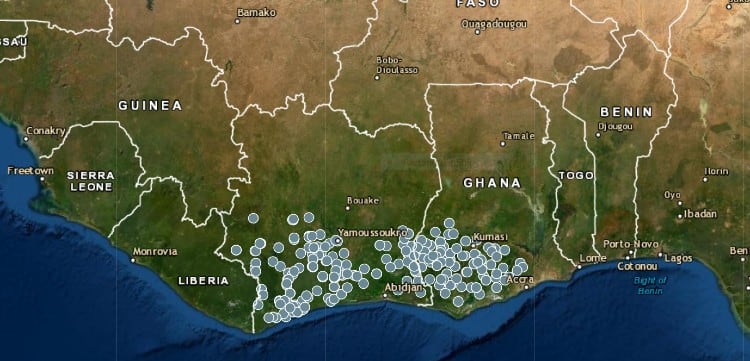“The picture of Ecuadorian cocoa farming is often portrayed with large, highly mechanized farms, however, the reality is that around 95% of cocoa farms are small to medium sized, family owned farms,” she says.
“To put this into context, a large farm is over 100 hectares, but in fact, the average size of a cocoa farm here is approximately 5 hectares. The average cocoa yield in Ecuador is higher than what we see on West African cocoa farms, and I am often asked why this is the case? Firstly, the main variety of cocoa grown here is different and produces a higher yield. Secondly, in general Ecuador is blessed with very good soil quality. My background is trading, I am certainly not an agronomist nor do I have a particularly green finger, but everything in my garden here grows without much attention to its wellbeing!”
The premiums generated from the purchase of Cocoa Horizons products generated CHF 17m ($18.8m) in funds last year, which was directly invested in Cocoa Horizons registered farms across the globe -- Angela Gubser, Managing Director Barry Callebaut Ecuador
Cocoa Horizons is Barry Callebaut’s preferred vehicle to implement sustainability activities and improve the livelihoods of cocoa farmers and their communities, and has been successfully used in West Africa.
Gubser says Barry Callebaut established the Cocoa Horizons Foundation to scale impact and drive on-the-ground change in cocoa growing communities through productivity, community and environmental activities.
“To put this into context, the premiums generated from the purchase of Cocoa Horizons products generated CHF 17m ($18.8m) in funds last year, which was directly invested in Cocoa Horizons registered farms across the globe. The Foundation is already operational in Côte d’Ivoire, Ghana, Cameroon, Brazil and Indonesia. It was a natural next step to commence the program here in Ecuador.”
She says farmers will benefit from Cocoa Horizons in Ecuador, specifically by increasing productivity and income, while protecting the environment.
“In terms of yield, we believe there is the potential for farmers to sustainably increase their yield and herewith their income. As I mentioned earlier, cocoa is grown almost exclusively by smallholder households and is their main source of cash income. As smallholder farmers are one of the most economically disadvantaged groups in Ecuador, the success of the cocoa industry here is definitely seen as critical to alleviating rural poverty. Offering training in Good Agricultural Practices, an integral part of Cocoa Horizons activities, has sparked a lot of interest from the farmers we are working with. They have told us they want to know more about the correct use of fertilizers and how to prevent disease,” she says.
She also mentions that as part of Barry Callebaut’s Forever Chocolate sustainability programme, the Group is committed to becoming carbon and forest positive by 2025. “Therefore growing more cocoa on existing farm land also reduces the risk of deforestation of protected areas.”
COVID-19
COVID-19 was unforeseen, of course, but Gubser says Barry Callebaut is committed to rolling out its Cocoa Horizons scheme in Ecuador and the first step was to map and register the 304 farmers, some of whom have multiple farm plots.
“The reason we do the mapping is to determine the geographic information of the farm, for example, the size, density of cocoa trees, details of other crops being grown. To undertake the mapping, we partnered with a local start-up business Visión Geográfica to use drone technology. Working with this team was excellent, we reduced the amount of people needed on the ground to undertake face-to-face ‘manual mapping’, which was an important consideration due to COVID-19, yet at the same time we were able to support a local growing business.”
Gubser also says that while undertaking the farm mapping, the team used the opportunity to speak to the farmers about the risks of COVID-19 and distribute hygiene packs, which included cocoa butter soap sourced from another local cocoa exporter.
“For me, working with the local community is something I truly value. Beyond the Barry Callebaut family here and the work we do with farmers and our suppliers, I think working with as many local businesses as possible is important,” she says.




